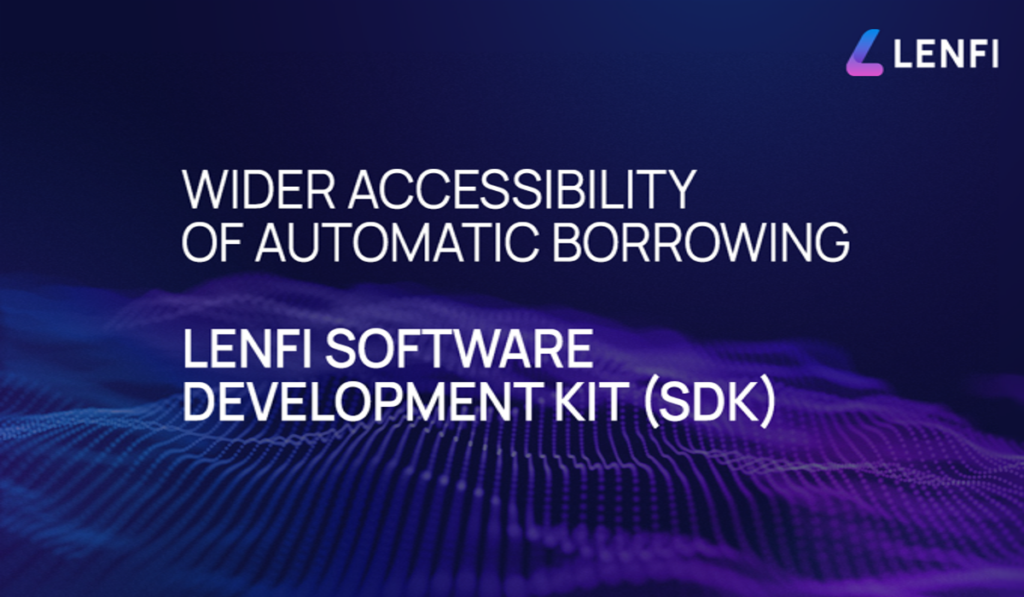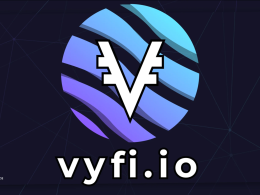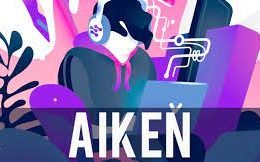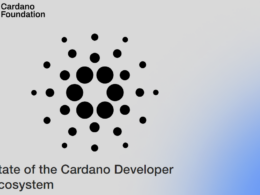Among the top-notch innovations of blockchain technology are lending solutions, which outshine traditional systems with plenty of benefits. By operating without the need to build credit scores, decentralized lending is redefining a new democratic financial era. Unlike traditional banks, which require high collateral requirements, crypto loans have low interest rates. For investors, the returns from decentralized lending surpass those from banks by far. Securely storing assets without having to trust any big entity with your asset or accessing loans without signing documents is a tip of the iceberg of the benefits blockchain offers.
Whether you’re a lender or a borrower, decentralized lending offers a wide range of utilities, all packaged in smooth digital experiences. Armed with enough knowledge, crypto lending is an easy way to multiply your funds. Instead of sitting on your holding while you wait for the oncoming bull run, a process called hodling, decentralized finance (DeFi) protocols provide superior ways to maximize your crypto holdings.
In the Cardano network, you can delegate your ADA to a stake pool and receive rewards every epoch or five days. While this mode is a good way to earn from crypto holdings, finite pool volumes will decrease rewards over time. For instance, in 2021, about 3.3 billion ADA was distributed to stakers. By 2026, rewards will reduce to about 1 billion ADA. As a result, savvy users seek alternative ways to maximize assets, and crypto lending is a good solution.
Lenfi is the second-largest lending protocol in the Cardano ecosystem. According to 2023’s closure report, Lenfi recorded over 30 million borrowed ADA. The numbers testify to the endless opportunities crypto lending introduces on the Cardano network. While Lenfi serves a significant portion of the Cardano family, it relies on a centralized user interface (UI) to perform on-chain transactions. This limits accessibility and innovation. To address this concern, the Lenfi team proposes a software development kit (SDK) to empower users with programming skills for interacting with the Lenfi protocol.
In this article, we’ll introduce the Lenfi protocol and dive into how the proposed SDK can make borrowing more accessible and user-friendly, paving the way for greater financial inclusion in the Cardano community. This solution is a key to unlocking a truly decentralized ecosystem.
A Rundown of Lenfi Protocol
Lenfi, previously known as Aada Finance, is a decentralized lending protocol built on the Cardano blockchain. It is founded on the core principles of blockchain technology, accessibility, flexibility, and community governance. A user on Lenfi can deposit crypto, earn interest on it, or borrow digital assets by providing collateral. By leveraging Cardano’s smart contracts, Lenfi provides a secure and efficient way to borrow and lend digital assets. Additionally, Lenfi minimizes gas fees for on-chain transactions and automates payments. The video below shows an overview of how the Lenfi protocol works.
A New Phase in the Cardano De-Fi Ecosystem
Lenfi V2 engine is introducing isolated pool market designs that disrupt the Cardano DeFi ecosystem through its groundbreaking features. These include novel DeFi pools, security, and risk management capabilities. In the spirit of decentralization, Lenfi allows anyone to create a lending pool and become a manager. As such, you are issued a Pool Manager NFT, which is transferable and merits ownership and management rights within the ecosystem. This feature allows DAOs and protocols to earn from borrowing and lending services using native tokens. In addition to delegating unused ADA to any stake pool, it enhances rewards for suppliers. Isolated market pools also ensure that potential breaches in smart contracts only impact an individual pool rather than the entire protocol, a clever way to enhance security.
The support of a wide range of assets enables the lending and borrowing of ADA alongside stablecoins and other native tokens. By following a multi-asset support approach, Lenfi addresses the diversity of financial needs and preferences in Cardano and the entire blockchain community. As a commitment to repay a loan, users receive tokenized NFT bonds. This functionality secures the lending process and introduces a new asset class within Cardano. In the case of under-collateralized loans, Lenfi uses open liquidations to allow any user to provide liquidity. This gives a low-risk opportunity and enhances the stability and integrity of the system.
To safeguard users’ assets, Lenfi V2 smart contracts have been audited by TxPipe and Anatsacia Labs, Cardano’s top lead blockchain security firms. By evaluating the smart contracts’ scalability, efficiency, and security through these audits, Lenfi adheres to the best industry standards and practices. Because the smart contracts are open-source, anyone in the community can review and contribute to Lenfi’s security. You can also check out the $20,000 bug bounty program that incentivizes participation in discovering system vulnerabilities. Moreover, the Lenfi DAO manages the treasury and adjusts protocol parameters, empowering the community to shape the protocol’s future.
What Lenfi V2 Borrowing Use Cases are available?
With basic knowledge of using Cardano wallets and signing transactions, lending and borrowing on Lenfi is straightforward. Drawing inspiration from TradFi and DeFi, Lenfi has several use cases. Let’s dive into each. However, it is also worth noting that the examples below are meant to put things into perspective, serve education needs, and should not be considered financial advice.
- Shorting — A classic trading strategy that allows you to profit from an asset’s price drop. With most pools offering low borrow annual percentage rates (APRs), a slight decrease in token price is potential profit for a borrower. To short Cardano Native assets, use your ADA as collateral to borrow a token you presume will drop and immediately sell it at the current price. This model allows you to profit from shorting without owning underlying assets by selling tokens and repurchasing them at a lower price.
- Longing — A trading strategy that lets you profit from price appreciation, the opposite of shorting. In this case, you buy a token (or a basket of them), expecting the price to rise with time. Lenfi simplifies this process by allowing users to use CNTs as collateral to borrow more ADA. The borrowed ADA is then used to buy your preferred token. Once the target price is hit, you can sell the tokens, repay the loan, and keep profits. The downside is that this leveraging strategy amplifies both gains and losses. As such, stay informed about risks and pay attention to market volatility.
- Arbitrage — A trading plan targeted at inefficient markets when inconsistencies in liquidity arise on different crypto exchanges. Put differently, all you have to do is buy an asset from a centralized exchange (CEX) or DEX and sell it on another at a premium. To achieve this on Cardano, head to Lenfi, find a pool accepting your CNT as collateral, and offer your desired liquidity at a low APR in ADA. Then, deposit your ADA into another Lenfi Pool with a higher APR. By borrowing at a lower cost and investing at higher returns, this gap is your key to arbitrage. As a rule of thumb, always perform due diligence on the risks and involved mechanisms before diving in.
- Liquidity farming — An act of lending crypto assets into a liquidity pool through DeFi to receive yields from farming rewards and trading fees. Lenfi provides you with capital to invest without liquidating ADA. This means you can borrow and invest in higher returns elsewhere. Here, you must be cautious about the cost of borrowing versus potential earnings.
- Token sales — In highly anticipated projects, token sales are a good way to leverage Cardano native tokens and increase allocation value. You can use Lenfi to secure better positions in future Cardano token sales. Consider a case where you have the LENFI token and want to purchase a new one in the market. By borrowing ADA with LENFI as collateral, you can buy and sell the new token once its price soars.
- Token Utilities — Though relatively new in the market, this strategy is slowly gaining traction. It entails borrowing CNTs with ADA or other native tokens as collateral to benefit from their utilities. Using this model, you can collect rewards from staking, fee discounts, or run nodes without owning the required token. A good example is holding LENFI to have voting power in the DAO.
Now that you know the trading strategies Lenfi has brought, let’s explore a few practical use cases tied to the lender’s and borrower’s perspectives to deepen understanding of how Lenfi works fully.
A look into Practical Examples of Decentralized Lending and Borrowing Cases on Cardano
First, consider Becky, a lender who deposits $500 into the protocol. Lenfi locks this capital and uses it to fulfill borrows (loans) from other people, and in return, Becky gets paid interest. As proof of deposit, Lenfi issues her a tokenized bond in the form of NFTs. The NFT bond is a digital signature that declares your deposit value, date, and interest rates. Because the NFT bond is transferrable, anyone possessing the NFT bond can claim back the deposit plus the gained interest by providing the NFT bonds to the protocol. In this case, if Becky gets back $505 (an arbitrary value), they will have made some profits. This operation structure forms the building blocks of Lenfi and uses smart contracts to sign deposit ownership.
Second, let’s explore a borrower’s case. Consider a case where Becky wants to own a particular token and does not want to lose her position on whatever (token) she has. If she deposits $500 ADA and borrows 400USDT stablecoin, she receives an NFT bond from the protocol as proof of loan. The NFT bond here will slightly differ from the lending case, carrying the deposit amount, date, interest rates, loan taken, loan dates, and interest paid on loans. For the deposit she made, the interest is positive, and for the loan, it’s negative. The difference between the two is profit if positive interests exceed negative.
Additionally, the difference between the provided collateral and the taken loan is locked in the NFT bond, then used to pay for the interests of using borrowed capital. In this case, Becky’s NFT is roughly worth $100. In a different scenario, let’s have Becky lose the 400USDT stablecoin, so she can’t repay the loan. Since her deposit is locked, she can sell or transfer the NFT to Bob for 400USDT. If Bob repays the loan and submits the NFT, they can take back the deposit. Interestingly, it is easier to mint NFTs, add information, and use it in smart contracts based on how Cardano works. This approach is better compared to minting NFTs on different blockchains.
Third, we have a case where Becky deposits 500 USDT, borrows 400 ADA, and gets her NFT. In a bear market, the ADA price decreases. At a different time of review, Becky has a loan worth 400 ADA at a current price of 200 ADA. If she provides 200 ADA to the protocol and her NFT, she can take back 500USDT. On the other hand, if the price increases and she has more value on her loan than the provided collateral, the loan cannot live anymore and, hence, liquidated. Put differently, the deposit needs to be sold to cover the costs. Usually, this liquidation happens before a predetermined threshold, 75% to 90%, depending on the asset. The NFT is also rendered invalid, and this can be verified Off-chain.
The Need for a Lenfi SDK
As the Cardano ecosystem grows, building an SDK for Lenfi’s decentralized lending and borrowing addresses several needs. With easy-to-use tools, developers can integrate Lenfi’s functionality into their applications, leading to broader platform adoption. Developers can also tailor custom integrations to specific needs. This innovation pioneers innovative use cases beyond the standard UI. It also diversifies Lenfi access points, opening up the services to users who prefer the command line to interact with blockchain networks. The SDK is essential to fostering an ecosystem of complementary digital products and services on Cardano DeFi. To get started with the Lenfi V2 engine, visit app.lenfi.io. The Lenfi documentation is a good place to explore if you’d like to dive deeper into the protocol and its functionalities.
The Team
The team behind Lenfi is made up of highly skilled professionals. They include:
- Mantas Andriuska — A co-founder and one of the team’s Aiken smart contract developers, he has also been interviewed on YouTube and Twitter regarding the launch and debut of Lenfi.
- Micah Kendall — A talented, hardworking, and the team’s main Aiken smart contract developer. Besides contributing to the Aiken Standard Library, Micah is actively involved in lending projects on Cardano, such as Butane and Yamfore.
- Lukas Armonas — A digital marketing expert and Lenfi’s project manager, he’s the mastermind behind Lenfi’s documentation, marketing endeavors, and educational content. He is driven by self-improvement and fearless in addressing challenges.
- Ovidijus Dargis — The team’s operational and marketing manager. He creates and implements Lenfi’s business growth strategies and oversees business affairs like partnerships and public relations.
- Ruslan Solunayov – A co-founder and product manager of Lenfi.
A Roadmap to Democratized Finance
To bring the SDK to life, the Lenfi team requests 125,000 ADA, as expressed in their fund 11 proposal. These funds only cover development costs, a total of 480 hours, with each developer getting paid $96.35 per hour. The SDK building process is well thought out and involves four key milestones, each taking up to a month to complete. We’ll explore each step, in detail.
1. Initiation of SDK on GitHub
The first milestone entails publishing a public codebase on Lenfi’s GitHub repository. By the end of this milestone, developers should be able to pull the SDK’s source code and build it locally. Anyone with the SDK can write the core transaction bodies for deposit, withdraw, borrow, repay, and liquidate actions. As closure, the Lenfi team will provide links to the SDK repository and post demo links on X (formally Twitter) to guide developers on how to get started.
This step equips developers with the necessary tools to extend functionalities in their applications, thus performing on-chain transactions. It will also be the starting point for developers who want to build lending solutions on Cardano using Lenfi SDK. At the time of writing, this step is in due progress.
2. Batcher Integration
In this phase, batcher execution actions will be available to use. Anyone using the SDK can act as a batcher for the protocol if the pool is busy. Developers can then interact with the four core functions, deposit, withdraw, borrow, and repay, with the protocol using a batcher. As the milestone ends, Lenfi SDK users can pull code from the public GitHub repositories and build a batcher. With X as the main media outlet, the Lenfi team will post to share batcher link actions.
In the Cardano blockchain, batchers are used by decentralized exchanges (DEXes) to collect orders and perform swaps. These units run nodes on the Cardano network and can create or submit transactions that call into DEX validator scripts. By aggregating multiple transactions into a single batch and executing them at once, batchers reduce the number of transactions the blockchain must perform. This is done in the off-chain logic of smart contracts and improves the scalability and efficiency of the DEX. To avoid conflicts, batchers sort transactions based on priority and price. For each transaction the batcher executes, a small fee is deducted as a reward.
The Cardano blockchain benefits from batchers due to reduced load on the blockchain, increasing DEX throughput. It also lowers fees for users when they share batch transaction costs jointly. By providing an alternative way to transact faster and reliably, batchers improve the overall user experience. Here’s an in-depth guide to Batcher on Cardano.
3. Expansion to the Pool Action
In this stage, additions to the public codebase will gear towards enhancing the SDK with more functionalities. The SDK should create a pool, delete it, and delegate assets to the stake pool. To close this step, developers will be able to engage with the added functionalities. Lenfi SDK users will have access to posts on X that link to the GitHub repositories and demonstration links.
Extending the SDK to provide pool actions brings several benefits to the network. It enhances the utility of both lending and staking functionalities, increasing overall participation in the Cardano network. Adding more layers of functionality in the Cardano De-Fi ecosystem attracts more developers and users alike. Additionally, it allows developers to offer unique features by integrating lending and staking, which differentiates Cardano from other networks. As more users engage, Cardano grows, enhancing its overall health and sustainability.
4. Lenfi SDK Finalization
The Lenfi will share an open-source codebase with full functionalities to wrap up SDK development. This phase entails sharing well-versioned SDKs publicly on npmjs.com and the Deno library. The team will also share tutorial videos for performing all actions, with corresponding examples linked to GitHub repositories. The Lenfi team will also share links to project closure reports and a closeout video.
This phase makes the SDK available to a larger developer audience and promotes transparency in the process. By sharing a well-versioned and tested SDK, developers are assured of using a stable and reliable tool to build software. As a result, developers are likely to ship a smaller number of bugs to production. Additionally, the team will publish video tutorials linked with GitHub repositories to educate developers, reducing their learning curve. The Lenfi team will share a closure report indicating the end of development and provide documentation for future reference. In turn, this documentation will ensure smooth maintenance and an easy start-off for future enhancements to the project.
Final Words
Developing the Lenfi SDK significantly impacts Cardano by increasing on-chain activity and creating more efficient markets. Lenfi paves the way for a robust De-Fi ecosystem on Cardano by easing project composability and the ability of applications and protocols to communicate with each other. With improved composability, developers can quickly build innovative solutions on existing protocols, enhancing their cross-functionality. It also improves liquidity by promoting the use of assets across multiple applications on Cardano.
The Lenfi SDK gives developers comprehensive tools to build diverse and user-friendly applications. This stride attracts more users and developers, fostering collaboration and innovation with the Cardano family. By streamlining the development of building lending solutions on Cardano, the network is expected to exhibit growth. For developers, this SDK reduces build time and lowers costs. For investors, it’s an opening to grow your assets. This will uplift Cardano’s position in the De-Fi ecosystem, placing it as the pioneer of digital innovations.
To learn more about Lenfi, please check the official website, Lenfi’s proposal on Project Catalyst, and the GitHub profile.










